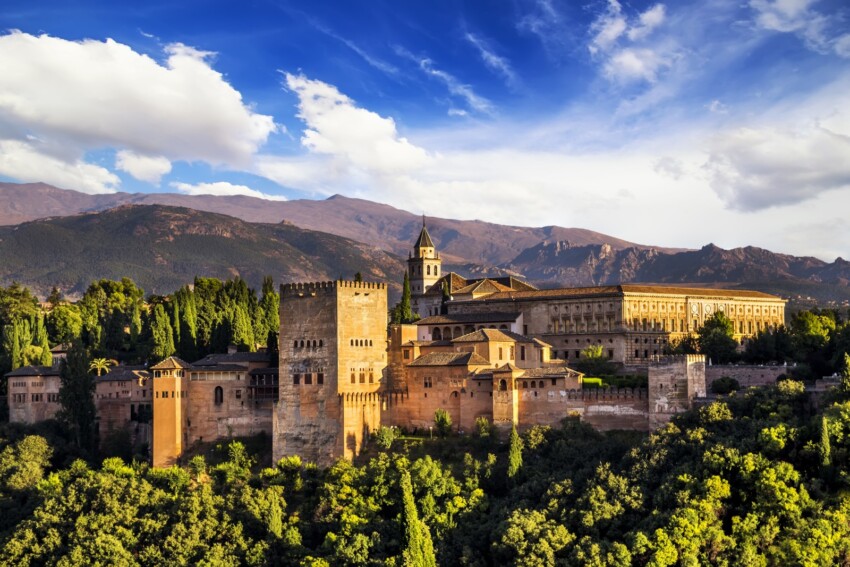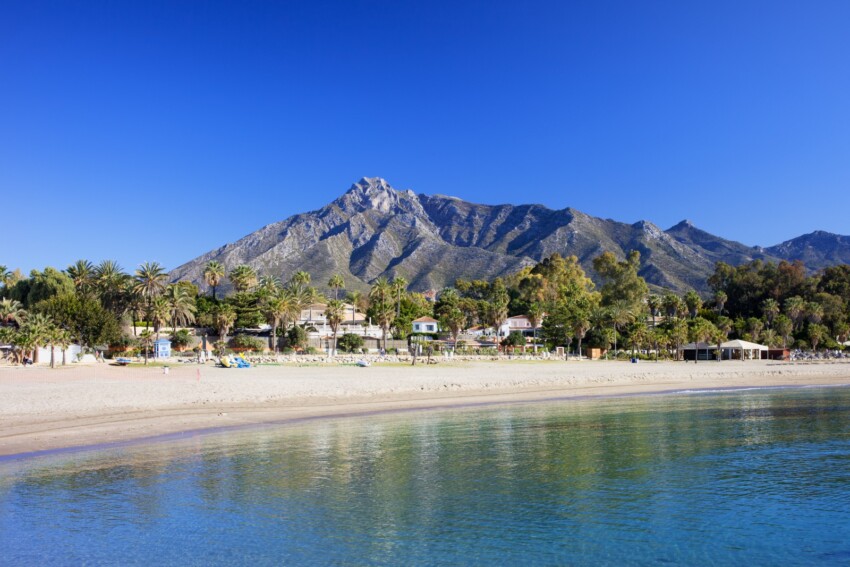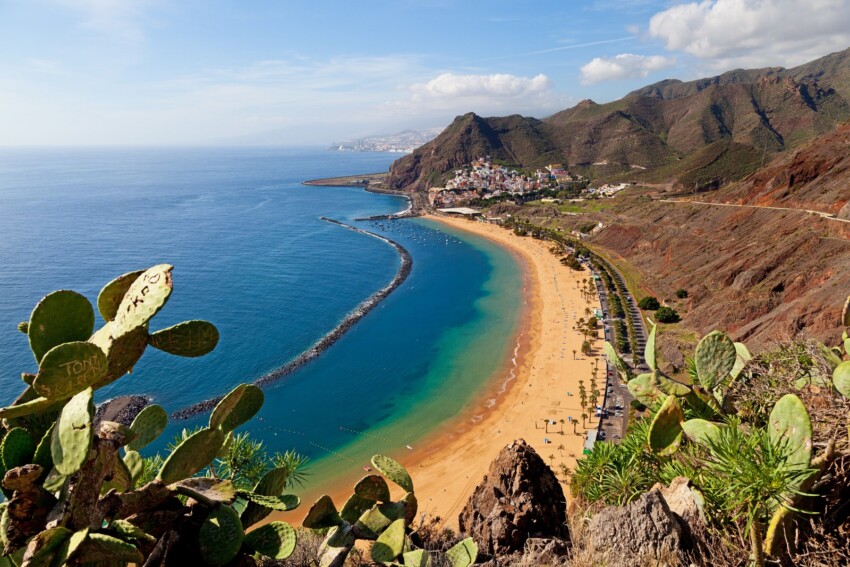

Spain is a huge country, with climates and landscapes that vary greatly in the different regions, and is therefore a holiday destination suitable for different types of holiday, from a week at the beach to a short city-break.
To help you choose where to stay in Spain, we have created a guide to Spain’s main resorts, divided by type: the most beautiful and famous cities, seaside resorts and islands. For each main location we offer a selection of the best accommodation facilities.
You will also find specific information on the enchanting Andalusia, considered by many to be the most evocative region in the whole country, and on Northern Spain, which in recent years has attracted more and more tourists thanks to the growing popularity of the Camino de Santiago.

There are many interesting cities in Spain that deserve to be included in a holiday itinerary. A good option is to stay in one of Spain’s major cities and from there travel by public transport or hire a car for fantastic day trips, but you can also dedicate your entire holiday to visiting a major city.
Madrid is a modern, exciting and vibrant metropolis. Still the seat of the Spanish monarchy, the Spanish capital is also a city of regal charm that boasts some of the most prestigious museums in Europe, including the famous Prado Museum, which alone attracts millions of visitors to the capital every year.
Legendary is its nightlife, with clubs open until late every night, but next to the trendy and transgressive Madrid there is the Madrid of traditions, of small neighbourhood bars, of popular festivals.
Accommodation in Madrid is generally cheaper than in other famous European capitals, but if you want to save money you can book your hotel, b&b or flat outside the centre and take advantage of the efficient public transport.
To find out which are the best areas to book a hotel in the capital visit the page Where to stay in Madrid.
Barcelona is to Spain as Milan is to Italy, Lyon to France or Istanbul to Turkey: it is not the capital city, but it has all the credentials to be one. The economic engine of the country, it is a dynamic and modern city that nevertheless remains strongly attached to its traditions.
Its tourist fame is linked to the name of Antonio Gaudí, to whom we owe bizarre buildings that are now world-famous, such as the famous houses and the unfinished Sagrada Familia, still under construction, and to a legendary nightlife. In addition to Madrid, it also has the sea!
Barcelona also has a wide range of accommodation on offer, with something to suit all budgets. Remember, however, that it is a very popular destination, especially in July and August, so book well in advance to find the best offers.
The third largest city in Spain is Valencia, the birthplace of paella, Spain’s most famous traditional dish, and of Santiago Calatrava, the brilliant contemporary architect.
Innovative constructions are the hallmark of this sunny and relaxed city, far more liveable than Madrid and Barcelona, where you will also find interesting museums, modernist palaces and a charming old quarter. Another good reason to visit Valencia is its rich gastronomic tradition, which goes far beyond the ‘simple’ (so to speak) paella.
The accommodation offer in Valencia is very varied, with something to suit all budgets: ultra-modern hotels of international chains housed in high skyscrapers, luxury hotels in historic buildings, 3-star hotels with swimming pools, traditional guesthouses… The quality/price ratio is generally very good.
The name Bilbao, the largest city in the Basque Country, immediately conjures up one of the most prestigious museums of contemporary art in Europe, the Guggenheim Museum, housed in a futuristic building that has become a symbol of the city.
All the most famous tourist attractions are linked to the modern, avant-garde soul of this city, but it is also worth spending some time in the old town, which is quaint and atmospheric with its cobbled streets, markets, churches and craft shops.
The modern character of the city is reflected in a wide choice of comfortable hotels and city apartments with all amenities; all major international chains are present in the city, guaranteeing high quality standards. If you want something more characteristic, look for your hotel or b&b in the Old Town.
Closer to Portugal than to the Mediterranean Sea, Salamanca is a city of rare beauty where you can rediscover the romantic atmosphere of medieval Spain. It is also the most dynamic city in the Castile and Leon region, with an important university and a lively nightlife.
There is good news for those who want to visit this wonderful city: hotel prices in Salamanca are very good compared to other places in Spain.

Andalusia is undoubtedly one of Spain’s most fascinating regions and is the ideal destination for both an evocative cultural-historical itinerary and an exciting beach holiday.
The typical image of Andalusia is that of a sun-kissed land, where small villages of white cottages pop up here and there among endless expanses of olive trees. Scattered throughout the region you can find numerous holiday homes and villas with swimming pools, ideal for a relaxing week away from the hustle and bustle.
The three main cities of the region, Seville, Cordoba and Granada, are true jewels, embellished with rich testimonies of the Arab past. Each of these cities has been declared a Unesco World Heritage Site and can boast an Islamic monument of extraordinary beauty: the Alcazár in Seville, the Mezquita in Cordoba and the Alhambra in Granada.
From Andalusia, you can make a detour to Great Britain with a visit to the outpost of Gibraltar or take the ferry for a day trip to Ceuta, a Spanish city on Moroccan territory.
The coast is dotted with more or less famous seaside resorts. If you are looking for the legendary Spanish movida, head to the Costa del Sol, to Marbella or Torremolinos, seaside towns with a well-developed tourist industry; for more natural landscapes better the west coast, with its surfing beaches such as Tarifa.
If you want a mix of culture and sea, a good base for exploring the region is Malaga, certainly not the most fascinating city in Andalusia but centrally located along the coast, which makes it easy to get around for day trips and with its city beaches also allows you to indulge in some beach time.

There are more than 8000 kilometres of Spanish territory bathed by the sea, divided into several coastal stretches, the most famous of which are the Costa Blanca (south of Valencia), Costa del Sol (in Andalusia), Costa Brava and Costa Dorada (closest to Barcelona).
The Spanish coasts are very diverse, some characterised by long golden sandy beaches, others dotted with coves and rocky inlets. Of all of them, the Costa Brava is perhaps the wildest, with a greater presence of domestic tourists (with the exception of more famous resorts such as Lloret de Mar) and a number of charming traditional villages, such as Roses and Cadaqués.
In the more famous resorts of the Costa del Sol and the Costa Blanca, such as Benidorm and Benicassim , tourists from all over Europe arrive, both young people and families, the former attracted by a wild nightlife and the latter by safe beaches and a wealth of services.
For a beach holiday without forgoing the amenities and cultural attractions of a city, choose Alicante as your base. This beautiful city on the south-east coast of Spain is very close to famous beach resorts.

Canaries or Balearics, which islands to choose? Although both are ‘Spain’ from a political-administrative point of view, the two archipelagos are very different in terms of climate and landscape.
The Balearic Islands, i.e. the islands of Mallorca, Menorca, Ibiza and Formentera, are closer to continental Europe and can therefore be reached more quickly; they are characterised by a Mediterranean climate with mild winters and hot summers.
Majorca and Ibiza, famous for their beaches and nightlife, are highly developed tourist destinations, offering numerous services and a large amount of accommodation, including hotels and holiday homes.
Menorca and Formentera are quieter, ideal for a relaxing holiday in nature; the accommodation offer is much less than on the two main islands, so it is good to book well in advance to have more choice.
The Canary Islands include the islands of Tenerife, Gran Canaria, Fuerteventura, Lanzarote, La Palma and the small, little-known Gomera and El Hierro.
They are located much further south than the Balearic Islands, off the coast of Africa, and therefore require more hours of flight time. The climate is subtropical, with little difference in temperature between winter and summer; the summer, however, is not particularly hot (averages are around 26°).
The volcanic origin has strongly characterised the landscape of the islands, each with its own identity and characteristics. The Canaries are perfect not only for a holiday in the sun, perhaps when it is already cold at home, but also for trekking, surfing and other outdoor activities. The larger islands, such as Tenerife, are also recommended for those who love nightlife.
On the main islands you will find a huge choice of accommodation, including mega-hotels with hundreds of rooms and all-inclusive holiday villages, luxury resorts and hotels, villas and holiday homes, cheap guesthouses and hostels. Much more difficult to find accommodation on the smaller islands, still completely unknown to mass tourism.
Walking the Camino de Santiago is an extraordinary experience that more and more people want to enjoy regardless of their religious beliefs. However, it is a very long walk, which requires organisation and a certain level of physical preparation.
If you don’t yet feel ready to tackle the Pilgrim’s Way to Santiago on foot, you can still visit some of the most striking locations in northern Spain with a holiday organised by you. You will discover a more authentic Spain, with a landscape light years away from the stereotypical image of Spain all sunshine and beach holidays, but definitely fascinating.
It is a good idea to establish the itinerary and book accommodation before you leave because in some villages the choice of hotels and B&Bs is limited. In more touristy locations, e.g. Santiago de Compostela, Oviedo and San Sebastian, the offer is definitely higher but it is still a good idea to book in advance, especially if you are travelling in high season.
Use the form below to check room availability and prices in real time.